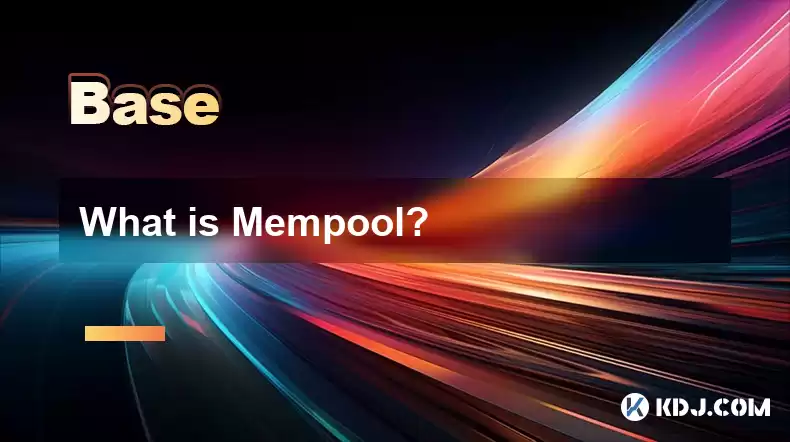-
 Bitcoin
Bitcoin $112400
-1.07% -
 Ethereum
Ethereum $3409
-3.27% -
 XRP
XRP $2.784
-6.60% -
 Tether USDt
Tether USDt $0.9997
-0.03% -
 BNB
BNB $739.3
-2.09% -
 Solana
Solana $158.0
-2.90% -
 USDC
USDC $0.9998
-0.02% -
 TRON
TRON $0.3213
-0.94% -
 Dogecoin
Dogecoin $0.1929
-5.01% -
 Cardano
Cardano $0.6974
-2.82% -
 Hyperliquid
Hyperliquid $36.69
-2.31% -
 Sui
Sui $3.327
-4.80% -
 Stellar
Stellar $0.3672
-5.18% -
 Chainlink
Chainlink $15.65
-3.07% -
 Bitcoin Cash
Bitcoin Cash $525.0
-1.68% -
 Hedera
Hedera $0.2291
-6.00% -
 Avalanche
Avalanche $20.91
-2.96% -
 Ethena USDe
Ethena USDe $1.000
0.00% -
 Toncoin
Toncoin $3.520
-1.12% -
 UNUS SED LEO
UNUS SED LEO $8.968
0.14% -
 Litecoin
Litecoin $105.7
0.26% -
 Shiba Inu
Shiba Inu $0.00001181
-1.79% -
 Polkadot
Polkadot $3.492
-2.08% -
 Uniswap
Uniswap $8.800
-3.10% -
 Dai
Dai $0.9999
-0.01% -
 Monero
Monero $289.9
-3.17% -
 Bitget Token
Bitget Token $4.243
-1.27% -
 Pepe
Pepe $0.00001006
-3.67% -
 Cronos
Cronos $0.1248
-5.68% -
 Aave
Aave $249.7
-2.50%
What is Mempool?
Mempool is a temporary storage for unconfirmed Bitcoin transactions; miners prioritize them based on fees, impacting confirmation times and network congestion.
Apr 08, 2025 at 12:36 pm

What is Mempool?
In the world of cryptocurrencies, particularly Bitcoin, the term Mempool is frequently mentioned. But what exactly is a Mempool, and why is it important? A Mempool, short for memory pool, is a critical component of the blockchain network that serves as a temporary storage area for unconfirmed transactions. When a user initiates a transaction, it is broadcast to the network and enters the Mempool before being included in a block and added to the blockchain.
How Does a Mempool Work?
When a transaction is created, it is sent to the Bitcoin network where it is verified by nodes. These nodes check the transaction for validity, ensuring that the sender has the necessary funds and that the transaction adheres to the network's rules. Once verified, the transaction is added to the Mempool. Here, it waits until a miner selects it to be included in a new block. The Mempool acts as a queue, holding transactions until they can be processed and confirmed.
The Role of Miners in the Mempool
Miners play a crucial role in the operation of the Mempool. They select transactions from the Mempool to include in the blocks they are mining. Miners typically prioritize transactions based on the transaction fee attached to them. Higher fee transactions are more likely to be picked up quickly because miners are incentivized to maximize their revenue. This means that transactions with lower fees might spend more time in the Mempool before being confirmed.
Mempool Size and Network Congestion
The size of the Mempool can vary significantly depending on the level of network activity. During periods of high transaction volume, the Mempool can become congested, leading to longer wait times for transaction confirmation. A congested Mempool can result in higher fees as users compete to have their transactions processed more quickly. Conversely, during times of low activity, the Mempool may be nearly empty, allowing for quick and inexpensive transaction confirmations.
Mempool and Transaction Fees
Transaction fees are a critical aspect of the Mempool dynamics. When you send a Bitcoin transaction, you can specify a fee that you are willing to pay. This fee is an incentive for miners to include your transaction in a block. The fee you choose can significantly impact how quickly your transaction is processed. If you set a low fee, your transaction might linger in the Mempool for an extended period. On the other hand, setting a higher fee can expedite the process, ensuring your transaction is picked up by a miner more quickly.
Viewing and Managing the Mempool
For those interested in monitoring the Mempool, there are several tools and resources available. Websites like Blockchain.com and Mempool.space provide real-time data on the current state of the Mempool, including the number of unconfirmed transactions and the average transaction fee. These tools can be invaluable for users looking to optimize their transaction fees and understand the current network conditions.
- Visit Blockchain.com: Navigate to the "Mempool" section to see the current number of unconfirmed transactions and the average fee rate.
- Use Mempool.space: This site offers detailed insights into the Mempool, including transaction propagation and fee estimates.
The Impact of Mempool on Transaction Confirmation Times
The time it takes for a transaction to be confirmed can vary widely based on the state of the Mempool. During periods of high congestion, transactions can take hours or even days to be confirmed. This is because miners have a limited capacity for how many transactions they can include in each block. If the Mempool is overflowing with transactions, those with lower fees may be left waiting. Conversely, during times of low congestion, transactions can be confirmed in a matter of minutes.
Mempool and Blockchain Scalability
The Mempool is also a key factor in discussions about blockchain scalability. As the number of transactions on the network grows, the Mempool can become a bottleneck. Solutions like the Lightning Network aim to alleviate this pressure by processing transactions off-chain and only settling the final balances on the blockchain. This can help reduce the load on the Mempool and improve overall network efficiency.
Frequently Asked Questions
Q: Can transactions be removed from the Mempool?
A: Yes, transactions can be removed from the Mempool if they are deemed invalid or if they are replaced by a higher-fee transaction through a process called Replace-By-Fee (RBF). Additionally, if a transaction remains in the Mempool for an extended period without being included in a block, it may eventually be dropped.
Q: How can I check if my transaction is in the Mempool?
A: You can check the status of your transaction using a blockchain explorer like Blockchain.com or Mempool.space. Enter your transaction ID (TXID) into the search bar, and the explorer will show you whether your transaction is still in the Mempool or has been confirmed.
Q: Does the Mempool affect all cryptocurrencies?
A: While the concept of a Mempool is most commonly associated with Bitcoin, other cryptocurrencies that use similar consensus mechanisms, such as Bitcoin Cash and Litecoin, also have Mempools. However, the specifics can vary depending on the cryptocurrency's protocol and network conditions.
Q: Can I speed up a transaction that is stuck in the Mempool?
A: Yes, you can attempt to speed up a transaction by using the Replace-By-Fee (RBF) feature if it was enabled when you created the transaction. This allows you to rebroadcast the transaction with a higher fee, increasing the likelihood that a miner will pick it up. Alternatively, you can use a Child-Pays-For-Parent (CPFP) transaction, where you create a new transaction that spends the outputs of the stuck transaction and includes a higher fee.
Disclaimer:info@kdj.com
The information provided is not trading advice. kdj.com does not assume any responsibility for any investments made based on the information provided in this article. Cryptocurrencies are highly volatile and it is highly recommended that you invest with caution after thorough research!
If you believe that the content used on this website infringes your copyright, please contact us immediately (info@kdj.com) and we will delete it promptly.
- BlockDAG, SEI, Ethena: Top Crypto Performers Under the Microscope
- 2025-08-03 10:50:16
- Bitcoin Blasts Past $119K: How Institutional Adoption and Macro Shifts Fuel the Fire
- 2025-08-03 10:55:16
- Crypto, Grok, and August: Decoding the Latest Trends and Insights
- 2025-08-03 11:10:16
- Crypto, Phishing, and Your Wallet: A New Yorker's Guide to Staying Safe
- 2025-08-03 10:30:16
- Troller Cat Meme Coin Presale Soars: A New King in the Crypto Jungle?
- 2025-08-03 10:30:16
- Grayscale, Altcoin Trust, and Mid-Cap Mania: What's the Deal?
- 2025-08-03 08:50:16
Related knowledge

What is the difference between CeFi and DeFi?
Jul 22,2025 at 12:28am
Understanding CeFi and DeFiIn the world of cryptocurrency, CeFi (Centralized Finance) and DeFi (Decentralized Finance) represent two distinct financia...

How to qualify for potential crypto airdrops?
Jul 23,2025 at 06:49am
Understanding What Crypto Airdrops AreCrypto airdrops refer to the distribution of free tokens or coins to a large number of wallet addresses, often u...

What is a crypto "airdrop farmer"?
Jul 24,2025 at 10:22pm
Understanding the Role of a Crypto 'Airdrop Farmer'A crypto 'airdrop farmer' refers to an individual who actively participates in cryptocurrency airdr...

What is the difference between a sidechain and a Layer 2?
Jul 20,2025 at 11:35pm
Understanding the Concept of SidechainsA sidechain is a separate blockchain that runs parallel to the main blockchain, typically the mainnet of a cryp...

What is the Inter-Blockchain Communication Protocol (IBC)?
Jul 19,2025 at 10:43am
Understanding the Inter-Blockchain Communication Protocol (IBC)The Inter-Blockchain Communication Protocol (IBC) is a cross-chain communication protoc...

How does sharding improve scalability?
Jul 20,2025 at 01:21am
Understanding Sharding in BlockchainSharding is a database partitioning technique that is increasingly being adopted in blockchain technology to enhan...

What is the difference between CeFi and DeFi?
Jul 22,2025 at 12:28am
Understanding CeFi and DeFiIn the world of cryptocurrency, CeFi (Centralized Finance) and DeFi (Decentralized Finance) represent two distinct financia...

How to qualify for potential crypto airdrops?
Jul 23,2025 at 06:49am
Understanding What Crypto Airdrops AreCrypto airdrops refer to the distribution of free tokens or coins to a large number of wallet addresses, often u...

What is a crypto "airdrop farmer"?
Jul 24,2025 at 10:22pm
Understanding the Role of a Crypto 'Airdrop Farmer'A crypto 'airdrop farmer' refers to an individual who actively participates in cryptocurrency airdr...

What is the difference between a sidechain and a Layer 2?
Jul 20,2025 at 11:35pm
Understanding the Concept of SidechainsA sidechain is a separate blockchain that runs parallel to the main blockchain, typically the mainnet of a cryp...

What is the Inter-Blockchain Communication Protocol (IBC)?
Jul 19,2025 at 10:43am
Understanding the Inter-Blockchain Communication Protocol (IBC)The Inter-Blockchain Communication Protocol (IBC) is a cross-chain communication protoc...

How does sharding improve scalability?
Jul 20,2025 at 01:21am
Understanding Sharding in BlockchainSharding is a database partitioning technique that is increasingly being adopted in blockchain technology to enhan...
See all articles

























































































